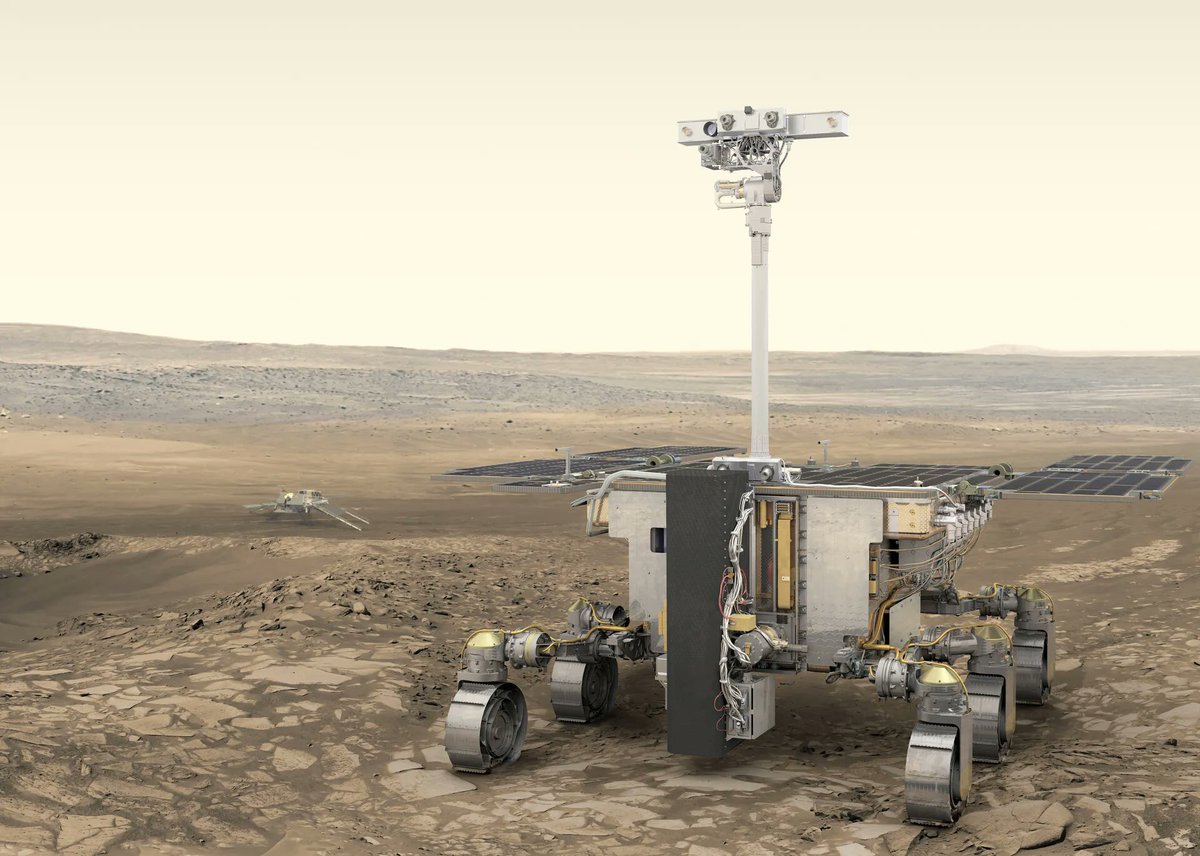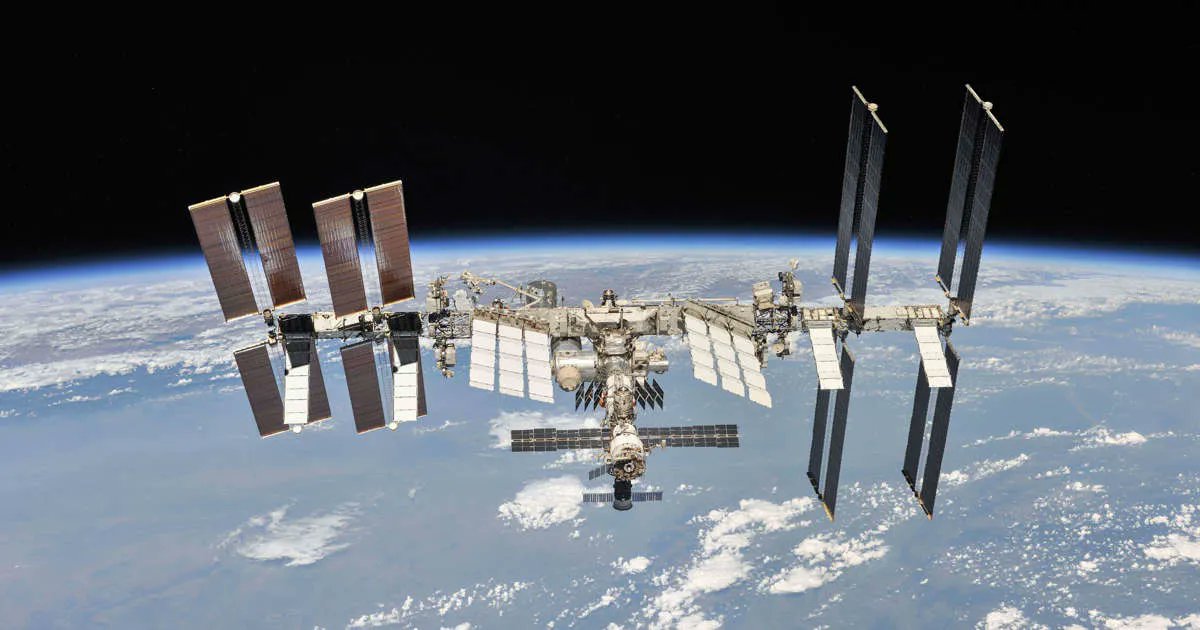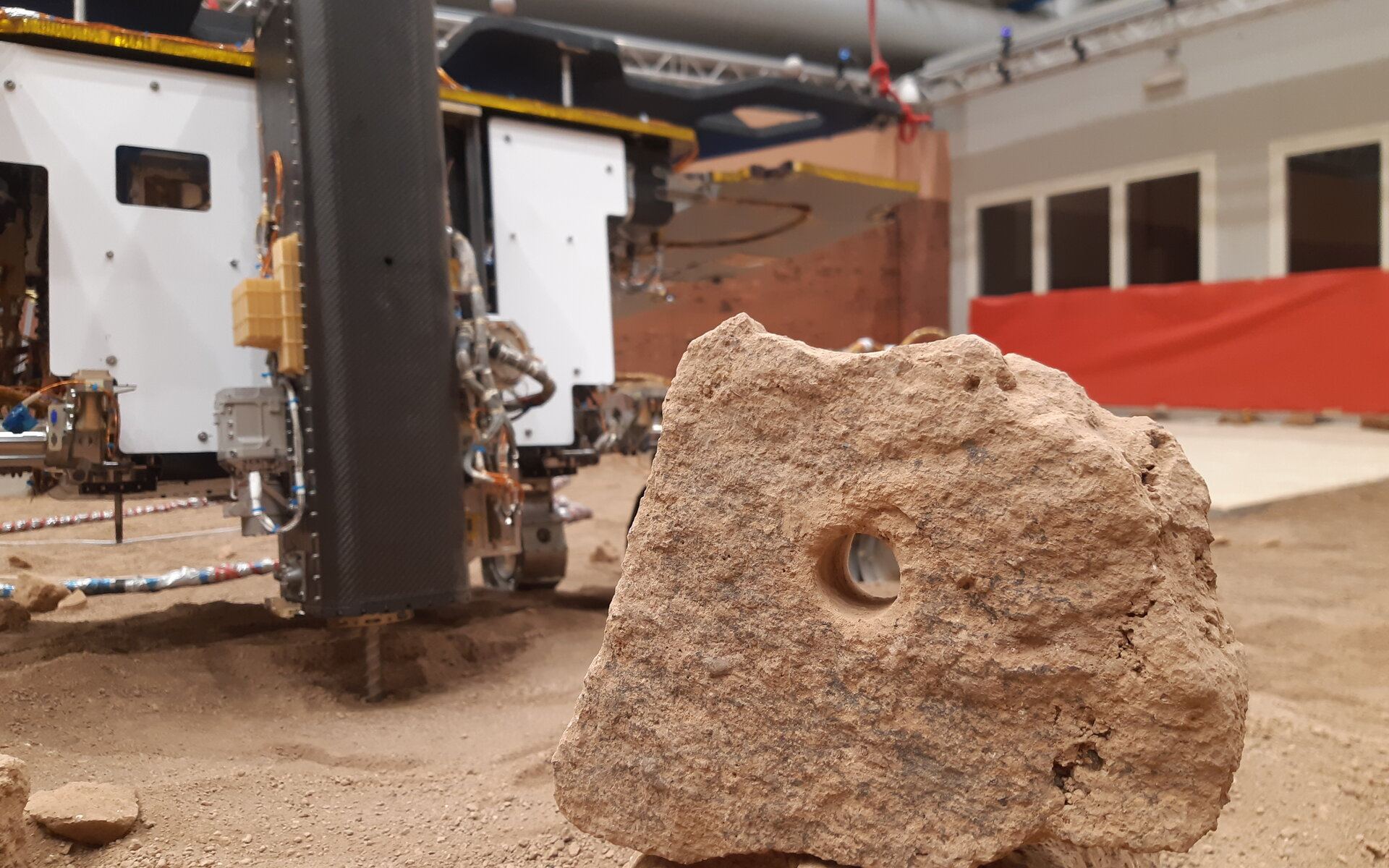Coordination between countries in space exploration is widespread. However, sometimes that coordination falls apart. In most cases, that failure is due to budgetary constraints. But in more recent times, it is due to geopolitical ones. Specifically, western space agencies have begun to cut ties with Roscosmos, the Russian space agency, on every program excluding the International Space Station, which is still operating normally. One of those project casualties is the timeline of the oft-delayed Exomars rover, Rosalind Franklin.
Continue reading “ExoMars is Suspended. ESA is Looking for new Solutions to Replace Russian Components”Wondering how Dependant ISS is on Russia? NASA Gives the Details

The Russian invasion of Ukraine has been dominating the news cycle lately. Amid tragic stories about rocket strikes, stalled offensives, and possible motives and outcomes, there’s been an ongoing “war of words” on social media. In particular, Dmitry Rogozin, the Director-General of the Russian State Space Corporation (Roscosmos), has been issuing thinly-veiled threats that Russia might be terminating its cooperation in space.
This included a video posted on Telegram by the state-controlled Russian news agency RIA Novosti that shows the Russian modules detaching from the International Space Station (ISS). In response to all the threats and hyperbole, NASA decided to host an FAQ session where they posted commonly-asked questions about the ISS. In what is eerily reminiscent of what happened in 2014, NASA let the world know that the ISS is still going strong and won’t be decommissioned anytime soon!
Continue reading “Wondering how Dependant ISS is on Russia? NASA Gives the Details”Russian Space Agency Employees are now Forbidden to Travel Outside Russia (Because They Might not Come Back)
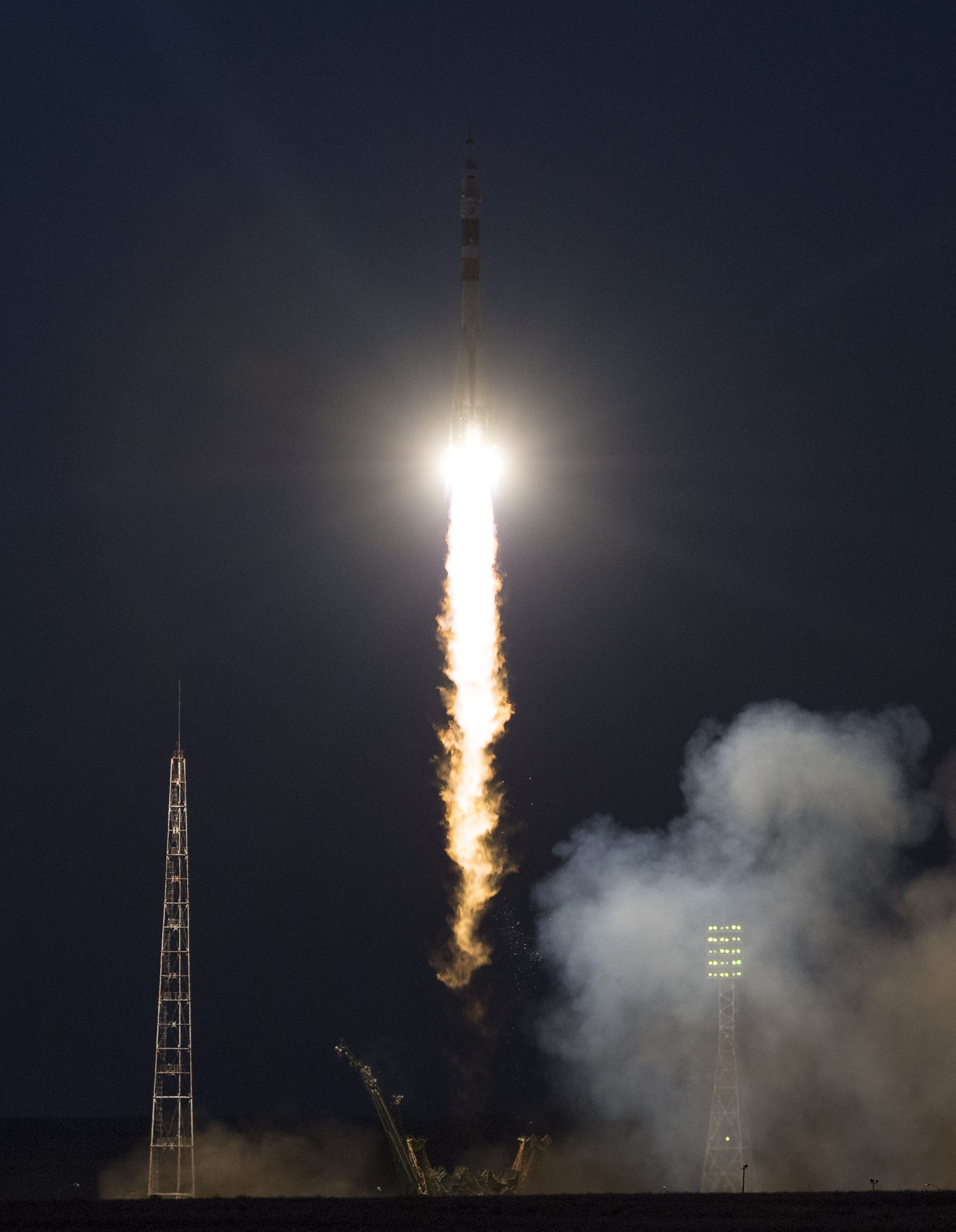
As Russia wages its terrible war against its neighbour Ukraine, the deteriorating situation inside Russia is leading many Russians to flee the collapsing economy. According to Russian journalist Kamil Galeev, Roscosmos Director Dmitry Rogozin is prohibiting Roscosmos employees from leaving the increasingly isolated nation.
Continue reading “Russian Space Agency Employees are now Forbidden to Travel Outside Russia (Because They Might not Come Back)”Russian Space Agency Tweets a Bizarre Video Showing the Russian Modules Detaching From ISS
The world is on high alert because of the unfolding crisis between Ukraine and Russia. Ever since Russian troops began deploying to the border regions between the two countries, there have been fears that conflict would ensue. Since the invasion began, there have also been genuine anxieties that it could spill over into neighboring states and even escalate to the point of a nuclear standoff. In the midst of all this, there have also been worries about the toll it might take on international efforts in space.
The International Space Station (ISS) is made possible through the cooperative efforts and funding of its participating space agencies – NASA (U.S.), Roscosmos (Russia), the ESA (Europe), the CSA (Canada), and JAXA (Japan). As such, it was rather curious when Russian state media company RIA Novosti posted a video online that showed Russian cosmonauts packing up and detaching the Russian segment from the ISS. Whether this represents a threat or a prediction, the message is clear: cooperation in space may be the next casualty of this war!
Continue reading “Russian Space Agency Tweets a Bizarre Video Showing the Russian Modules Detaching From ISS”Germany’s Space Agency Cancels all its Projects With Russia. They Even Turned off an Instrument on a Russian Space Telescope
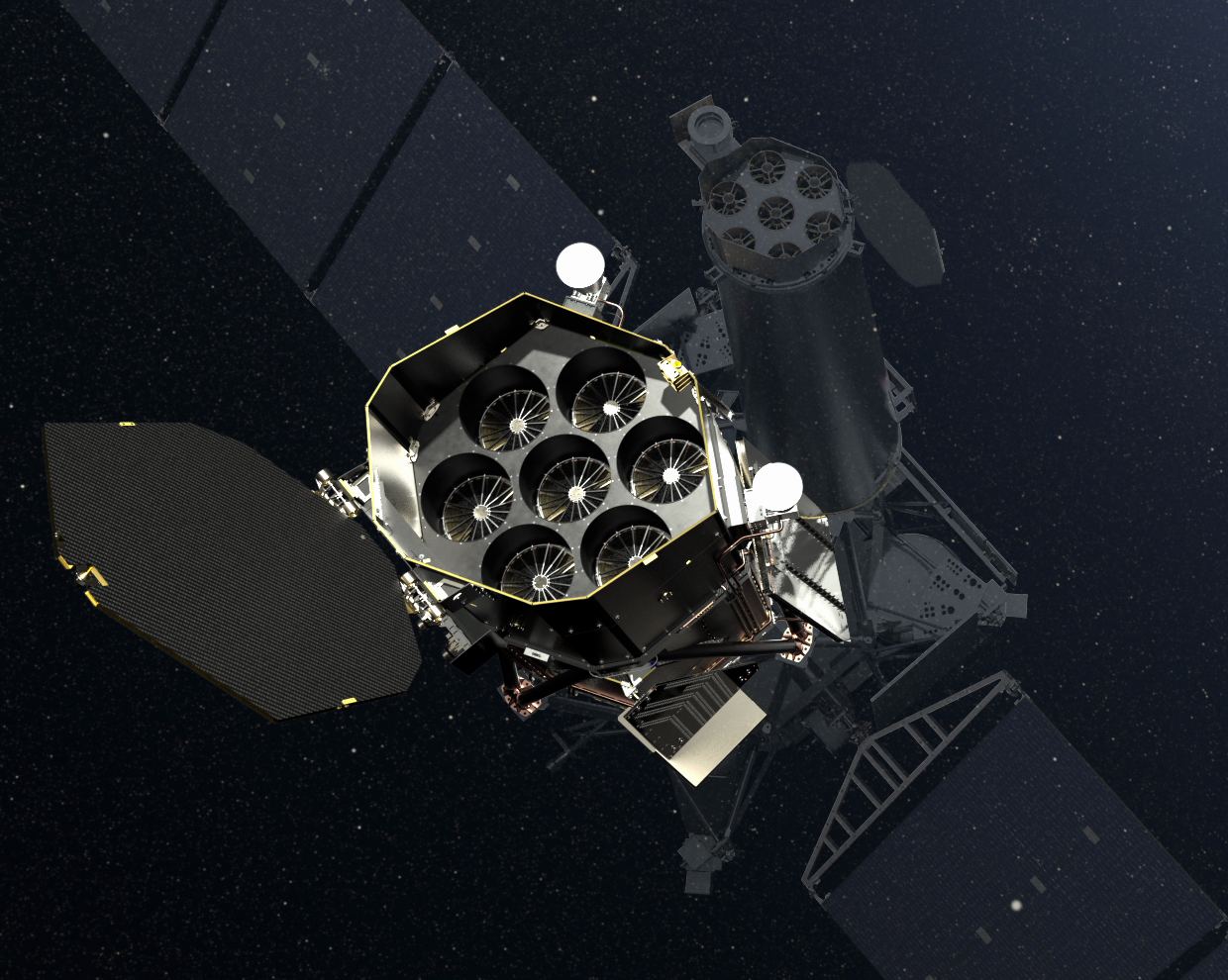
Germany is flexing its muscles.
The German government recently announced a massive increase in military spending to counter Russian military action in Europe. The German Aerospace Center (DLR) has cancelled its bilateral cooperation with Russia following that move. It looks like the Spektr-RG space telescope, a joint mission between Russia and Germany, is the first casualty of the cancelled partnership.
Continue reading “Germany’s Space Agency Cancels all its Projects With Russia. They Even Turned off an Instrument on a Russian Space Telescope”If Russia Backs out of the ISS, SpaceX Could Help Keep the Station Operational
The ongoing conflict in Ukraine has wide-reaching implications, not only in the geopolitical sphere but also outside of the atmosphere. On the International Space Station (ISS), Russians work alongside astronauts from other countries that are currently imposing economic and trade sanctions in an attempt to force their country to stop their invasion of their neighbor. It was only a matter of time before that conflict escalated to the point of arguments over the ISS, but this time an unlikely hero appeared to defend the interests of Western nations – Elon Musk.
Continue reading “If Russia Backs out of the ISS, SpaceX Could Help Keep the Station Operational”Europe’s ExoMars Rover Will Likely Miss This Year’s Launch Window Because of Russia’s Invasion of Ukraine
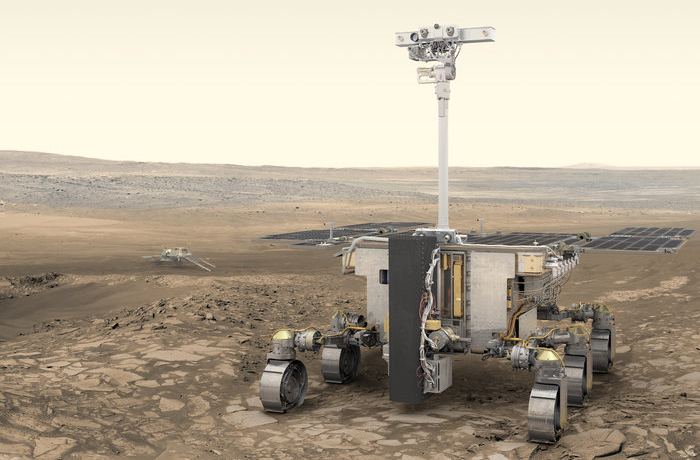
As countries around the world respond to Russia’s invasion of Ukraine with sanctions aimed at crippling Moscow and Vladimir Putin, the global cooperation in space exploration that has been forged over the past 30-plus years will certainly be impacted.
Continue reading “Europe’s ExoMars Rover Will Likely Miss This Year’s Launch Window Because of Russia’s Invasion of Ukraine”The Bottom of Valles Marineris Seems to Have Water Mixed in With the Regolith

For generations, humans have dreamed of the day when we might set foot on Mars. For many others, the dream has been one of settling on Mars and creating an outpost of human civilization there. Today, it looks as though both of these dreams are getting closer to becoming a reality, as space agencies and the commercial space industry are deep into planning regular crewed missions to the Red Planet. And when planning for long-duration missions to destinations in deep space, a vital aspect is assessing the local environment.
For example, missions to Mars will need to be as self-sufficient as possible, which means using local resources to meet the needs of the mission and astronauts – a process known as in-situ resource utilization (ISRU). According to new data from the ESA-Roscomos ExoMars Trace Gas Orbiter (TGO), the massive equatorial canyon known as Valles Marineris (Valley of Mars) contains vast deposits of ice that have remained hidden to scientists until now.
Continue reading “The Bottom of Valles Marineris Seems to Have Water Mixed in With the Regolith”‘I’m Truly Happy’: Japanese Billionaire Yusaku Maezawa Floats Into Space Station
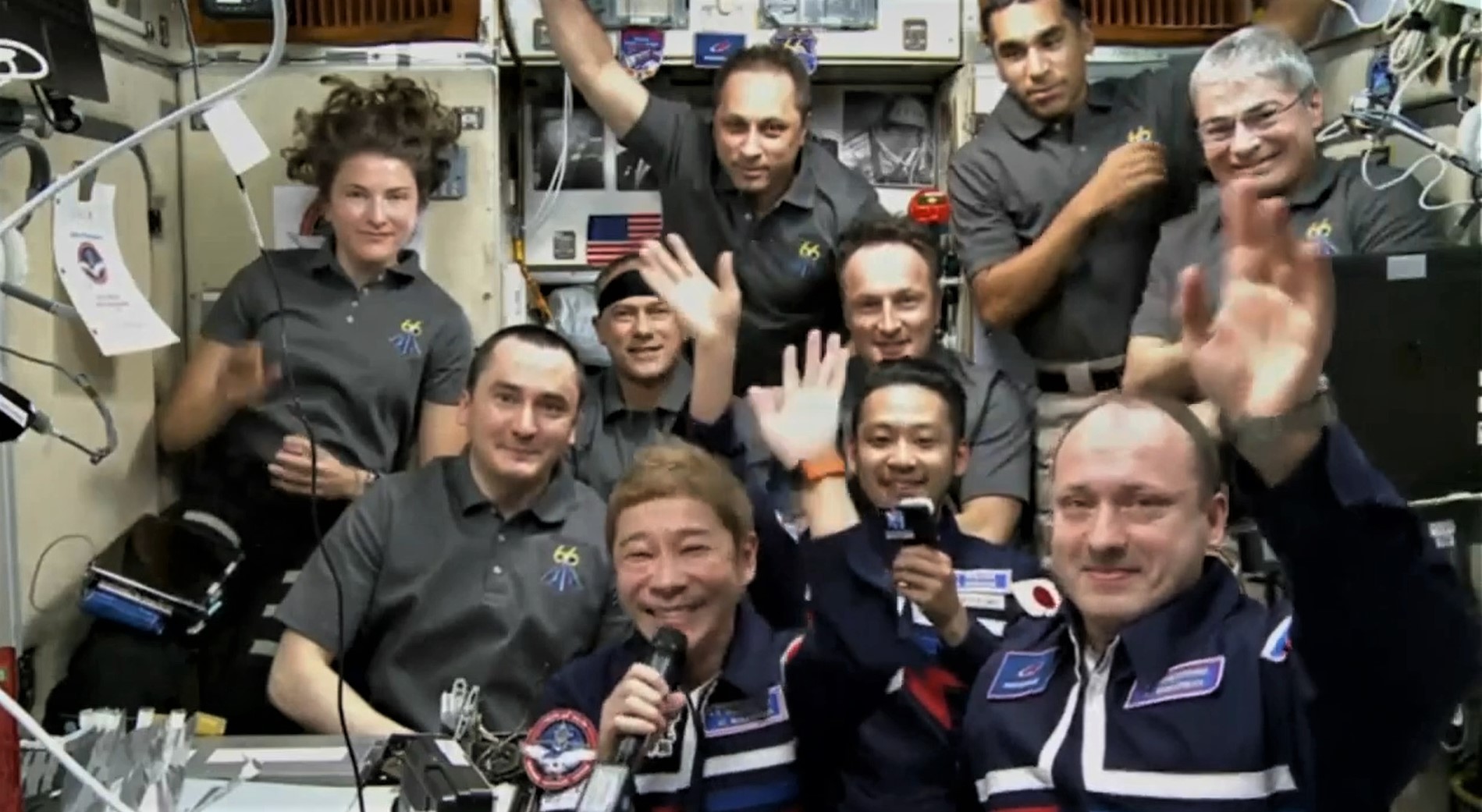
Japanese billionaire Yusaku Maezawa has begun his first space adventure — an 11-day visit to the International Space Station that could serve as the warmup for a round-the-moon trip to come.
Maezawa, production assistant Yozo Hirano and Russian cosmonaut Alexander Misurkin rode a Soyuz capsule into orbit from Russia’s Baikonur Cosmodrome in Kazakhstan, with launch coming at 0738 GMT December 8 (12:38 p.m. local time, 2:38 a.m. EST).
Hours later, the Soyuz docked with the station, and the trio floated inside to meet the orbital outpost’s seven other spacefliers. Maezawa was all smiles as he greeted family and friends back on Earth over a video link.
Before liftoff, the 46-year-old entrepreneur and art collector said he was looking forward to his journey.
“I feel excited like an elementary student waiting for a school trip,” he said at a news conference. “I want to see the Earth from space, float in zero gravity, and see how I will change through this experience. I was blessed with this opportunity, and I’m truly happy I can go.”
Continue reading “‘I’m Truly Happy’: Japanese Billionaire Yusaku Maezawa Floats Into Space Station”ExoMars Will be Drilling 1.7 Meters to Pull its Samples From Below the Surface of Mars
In about a year (Sept. 20th, 2022), the Rosalind Franklin rover will depart for Mars. As the latest mission in the ESA’s and Roscosmos’ ExoMars program, Rosalind Franklin will join the small army of orbiters, landers, and rovers that are working to characterize the Martian atmosphere and environment. A key aspect of the rover’s mission will involve drilling into the Martian soil and rock and obtaining samples from deep beneath the surface.
To prepare for drilling operations on Mars, the ESA, Italian space agency (ASI), and their commercial partners have been conducting tests with a replica – aka. the Ground Test Model (GTM). Recently, the test model completed its first round of sample collection, known as the Mars Terrain Simulation (MTS). The rover drilled into hard stone and extracted samples from 1.7 meters (5.5 feet) beneath the surface in a record-breaking feat.
Continue reading “ExoMars Will be Drilling 1.7 Meters to Pull its Samples From Below the Surface of Mars”
